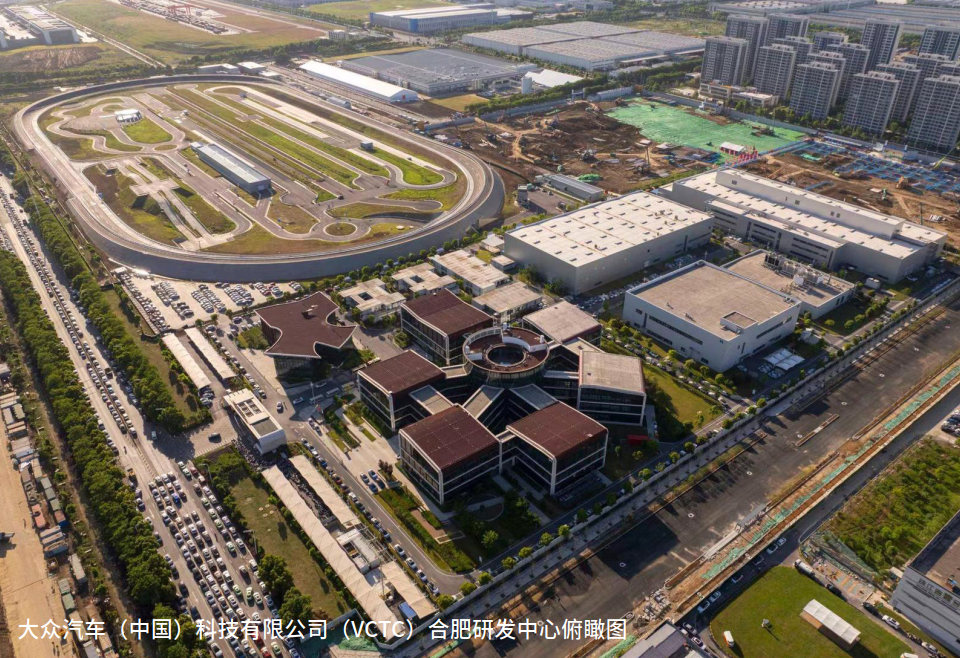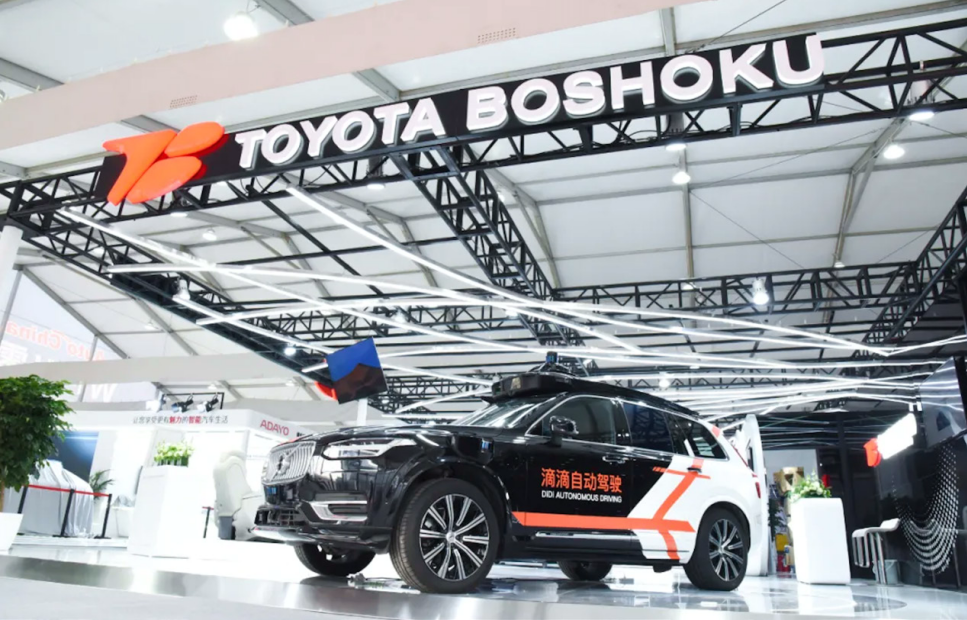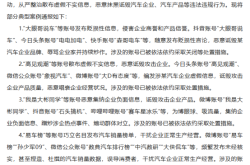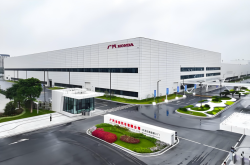"Increasing Positions" Continues: Foreign Auto Companies and Suppliers Jointly Embrace New Changes
![]() 12/30 2024
12/30 2024
![]() 648
648
Despite intensifying market challenges, most foreign enterprises remain optimistic about the investment prospects in China. Foreign vehicle manufacturers and Tier 1 suppliers continue to "increase their presence" in the Chinese automotive market, fostering a new automotive industry ecosystem.
According to the Ministry of Commerce's website on September 14, the head of the Ministry's Foreign Investment Department introduced the status of foreign investment attracted nationwide from January to August 2024. Relevant data shows that from January to August this year, nearly 37,000 new foreign-invested enterprises were established in China, an increase of 11.5% year-on-year, with actual foreign investment exceeding 580 billion yuan. Regarding this, the head of the Ministry's Foreign Investment Department stated that these figures are at a high level, both when compared globally and with the scale of foreign investment attracted in recent decades.
It is evident that despite intensifying market challenges, foreign enterprises remain optimistic about investment prospects in China. This is reflected not only in the continuous rise in newly established foreign-invested enterprises since last year but also in the strengthening of "established" foreign enterprises such as vehicle manufacturers and Tier 1 suppliers in the Chinese automotive market.
Vehicle Manufacturers: Some Advancing, Some Retreating
According to recent news, Mercedes-Benz has decided to further increase its investment in China. The group plans to invest over 14 billion yuan with its Chinese partners to enrich its localized product lineup of passenger cars and light commercial vehicles. Notably, since the start of 2024, Ola Källenius, Chairman of the Board of Management of Daimler AG, has visited China four times, underscoring the importance attached to the Chinese market.
Similarly, in April this year, Volkswagen China announced plans to expand its production and innovation center in Hefei while accelerating the production of two intelligent electric vehicle models developed jointly with XPeng Motors under the Volkswagen brand. Reports indicate that the relevant investment has reached nearly 20 billion yuan (about 2.5 billion euros) to date.

Also in April, BMW Group announced an additional investment of 20 billion yuan in its Shenyang production base for significant upgrades and technological innovations at the Shenyang Dadong Plant. According to the plan, BMW Group's "New Generation" models will be the first to achieve localized production in Shenyang in 2026.
Tesla has continued to expand its charging business in China, promoting the layout of charging stations. As of August this year, Tesla had built over 11,500 supercharging stations in China, with its charging network covering 100% of provincial capitals and municipalities directly under the central government on the Chinese mainland. Currently, automakers such as SAIC-GM and Polestar have joined Tesla's charging network in China.
An Auto Review journalist learned that, apart from Tesla, foreign vehicle manufacturers have faced challenges in the domestic automotive market this year. Currently, multiple foreign brands have lowered their performance expectations for 2024. Meanwhile, brands such as Honda and Nissan have reduced their fuel vehicle production capacity planning and initiated a comprehensive transformation towards electrification and intelligence.
Honda will reduce its fuel vehicle production capacity by 30% in the Chinese market. To this end, Honda's two fuel vehicle factories in China will cease production in October (Guangzhou-GAC Honda joint venture factory) and November (Wuhan-Dongfeng Honda joint venture factory) this year, respectively. Simultaneously, Honda has opened a new production line dedicated to new energy vehicles in Wuhan, Hubei, which commenced production on October 11 this year with a designed capacity of about 120,000 units. Initially, it will produce multiple electric vehicle models such as the Lingxi L and Ye S7. According to the plan, by 2035, Honda will achieve 100% sales of pure electric vehicles.
Dongfeng Nissan released the "New Endeavor 100" action plan in June this year. The plan invests over 10 billion yuan in the next three years for the research and development of new energy vehicle models, and the number of R&D personnel will also be expanded from 1,600 before the plan's release to 4,000. Notably, in mid-June this year, Nissan shut down a fuel vehicle factory in China. In response, Dongfeng Nissan stated that it would increase the production line layout and research and development of new energy vehicle models while ensuring the production capacity of existing fuel vehicle models to better meet user needs. By the end of 2026, Dongfeng Nissan will launch seven new energy products.
Compared to Nissan and Honda, Toyota's layout in the Chinese market is more extensive. It has not only strengthened its competitiveness in the field of new energy vehicles through cooperation with companies such as BYD and GAC but also established a strategic partnership with Tencent, leveraging Tencent's advantages in AI large models, cloud computing, and digital ecosystems to jointly explore and create new value in mobile travel.
There are also reports that Toyota Motor is currently in talks with relevant departments in Shanghai to discuss the possibility of establishing a wholly-owned factory locally and hopes to obtain preferential policies similar to those enjoyed by Tesla's Shanghai factory. As of press time, Toyota Motor had not responded to these reports.
Foreign Tier 1 Suppliers Continue to "Increase Their Presence"
Foreign Tier 1 suppliers also remain optimistic about the Chinese market, with the successive implementation of new projects serving as the strongest proof. According to incomplete statistics, as of October this year, over a dozen foreign Tier 1 enterprises have invested in new projects in China, including Schaeffler, ZF, and Continental, with several announcing progress on their new projects.
ZF's largest airbag production base project in the Asia-Pacific region was launched in Wuhan, Hubei, in April this year, with the Wuhan R&D center also commencing operations simultaneously. In September this year, the new headquarters building for its passive safety system (ZF LIFETEC) in the Asia-Pacific region was officially opened in Jiading, Shanghai.
Also in April this year, Toyota Boshoku (China) announced a strategic cooperation with Didi Chuxing's autonomous driving division. According to the cooperation agreement, the two parties will collaborate to create a new generation of smart cabins. Just over ten days after the official announcement, the results of their cooperation—the "Robotaxi Smart Cabin Solution"—appeared at the Toyota Boshoku (China) booth at the Beijing Auto Show. This solution has been successfully applied to Didi Chuxing's L4 autonomous driving project and has undergone practical testing and verification within the autonomous driving demonstration zones in Shanghai and Guangzhou.

Additionally, Toyota Boshoku's Yingtai Xiaohu Island Plant in Guangzhou was officially completed in September this year. The total investment in this plant is approximately 8.5 billion yen, covering an area of about 82,000 square meters. The plant's construction aims to expand production capacity and optimize logistics efficiency in the Guangzhou area, enhancing competitiveness. After completion, the plant will primarily produce automotive interior parts such as car seats and door panels while promoting logistics automation in the factory.
Continental initiated the fourth-phase expansion project of its Continental ContiTech Hefei factory in June this year. This factory is Continental's first and only tire production base in China. Since its establishment in 2009, it has been developing rapidly and steadily, completing the second and third phase expansions in 2013 and 2017, respectively. This expansion is considered to strengthen its business in the Asia-Pacific region and the Chinese market, helping Continental further enhance its overall production capacity for ultra-high-performance (UHP) tires.
The reason why foreign Tier 1 suppliers continue to invest is undoubtedly due to their optimism about the Chinese market.
In terms of localized layout, Zhuang Zhiqiang, Director and Executive Deputy General Manager of Toyota Boshoku (China) Co., Ltd., said in an interview with an Auto Review journalist, "Toyota Boshoku has always focused on localization. We started with production localization, followed by procurement localization, then development and R&D localization, and ultimately talent localization. Rooted in China, Toyota Boshoku will adhere to sustainable development, empowering talent growth, supporting partner development, contributing to community welfare, assuming more social responsibility, and striving to jointly realize sustainable value creation with stakeholders."
Not long ago, Peter Laier, a member of the ZF Group Board of Directors, also stated in an interview with Xinhua News Agency that as the Chinese economy continues to develop, ZF sees more business expansion opportunities in the Chinese market. "We will continue to increase investments in China, including both in R&D and the localized production of new technologies."
In China, for the World
It is worth mentioning that with the strengthening of R&D investment and innovation, foreign Tier 1 suppliers have developed more and more product technology achievements in China. These achievements are not only used in the Chinese market but are also being introduced globally.
Taking Aptiv as an example, it plans to increase investment in China and deepen its presence in the local market. By 2028, it aims for its local business in China to account for 70% of its overall business. Currently, the company is seeking triple breakthroughs in intelligent driving technology innovation, market penetration in China, and localization of intelligent driving products by establishing expanded R&D centers in China, building a domestic automotive ecosystem, and deepening strategic partnerships with local Chinese enterprises.
At this year's CES exhibition, Aptiv showcased for the first time the seventh-generation 4D millimeter-wave corner radar, developed by its local Chinese team and equipped with the country's first integrated radar chip. This not only marks a significant technological breakthrough for Aptiv but also demonstrates its emphasis on the Chinese market and its determination to expand globally.
In June this year, Stefan Hartung, Chairman of the Board of Management of Robert Bosch GmbH, pointed out in an interview with the media, "China is an innovation hub and a leader in emerging technology fields. Due to market demand, we have established software development capabilities in China. Now, innovations developed in China can be shared with other global markets. This is a transformation."
Christophe Périllat, Chief Executive Officer of Valeo Group, previously stated, "In a sense, China has become a training center for global automakers. Today, China is where we develop, test, and introduce innovative products and technologies. The environment here inspires us to show our best. Like athletes, we train here to become faster, higher, and stronger." It is revealed that in the first half of this year, 30% of Valeo China's business orders came from international OEMs, with core processes such as procurement decisions and product development primarily completed in China.
In the eyes of foreign Tier 1 suppliers, China is leading the transformation of the global automotive industry. Winning the market in China benefits the global market—a consensus among many foreign Tier 1 suppliers. Unlike the previously repeated phrase "In China, for China," in the fields of electrification and intelligence, more foreign Tier 1 suppliers have gradually shifted their focus and are striving to become "In China, for the World."
This concept also applies to foreign vehicle manufacturers. Taking Tesla as an example, in October this year, Tesla's Shanghai Gigafactory reached the milestone of rolling off its 3 millionth new vehicle. One-third of these models are exported to overseas markets such as Europe and the Asia-Pacific region and have received high recognition. The factory has also become an important export center and production base for Tesla globally.
In summary, China has become a key market that cannot be ignored by foreign auto companies and supply chain enterprises. Leading automotive parts companies worldwide have established production bases, R&D centers, and testing platforms in China. This has not only significantly promoted the innovation and advancement of local automotive parts technology in China but also fueled the robust development of the global automotive industry. Amid the wave of global economic integration, the cooperative relationship between automotive parts manufacturers and vehicle manufacturers has deepened. The Chinese market not only provides a solid foundation and testing ground for these international parts giants but also contributes to the optimization and upgrading of the Chinese automotive supply chain as they help Chinese automotive brands go global, jointly creating a win-win situation. A brand-new global automotive industry ecosystem is emerging and gradually taking shape in China.
Note: This article was originally published in the "Industry Reports" section of the December 2024 issue of Auto Review magazine. Stay tuned.
Images: From the Internet
Article: Auto Review
Typesetting: Auto Review






